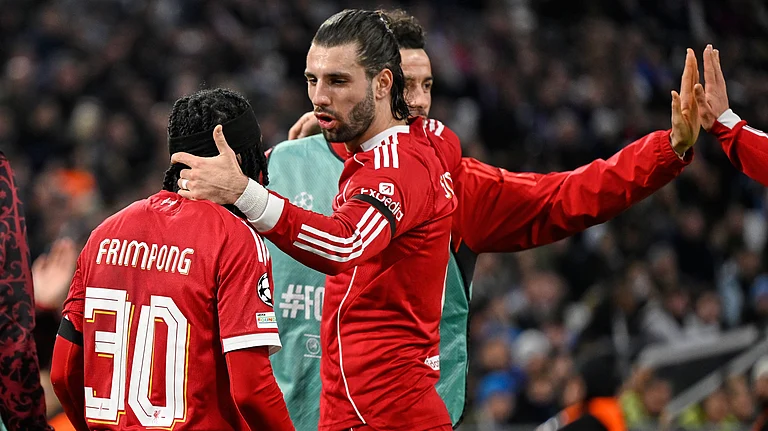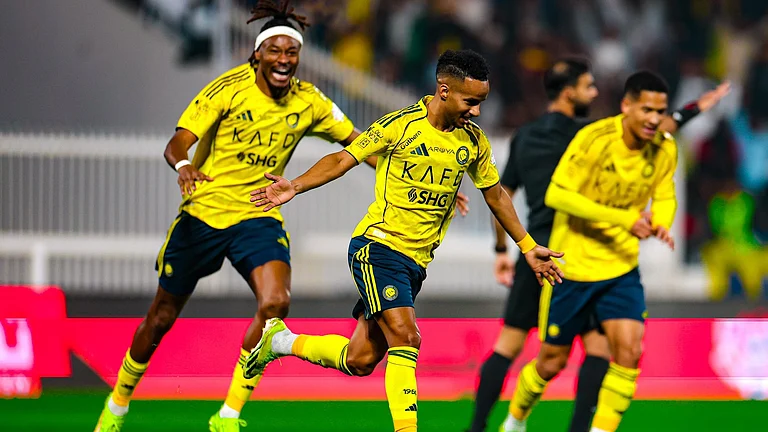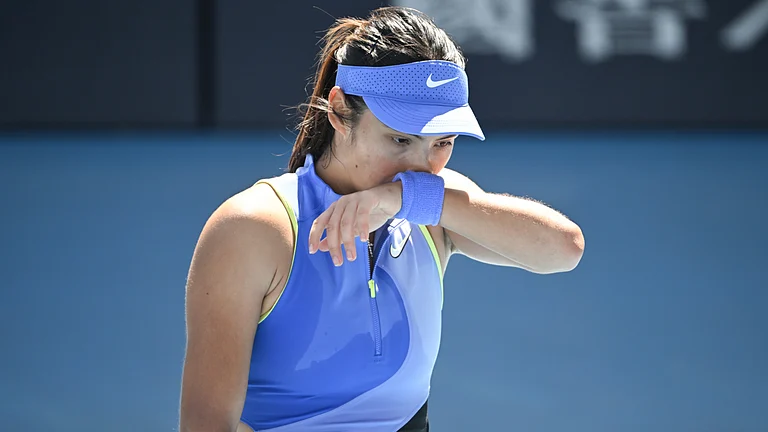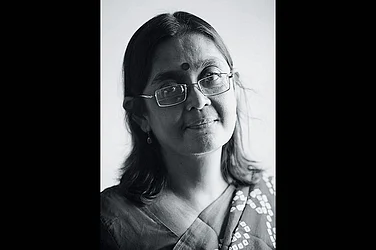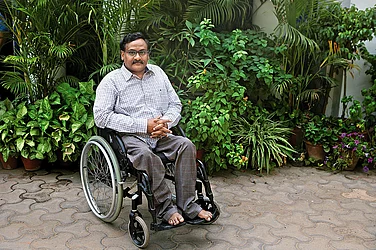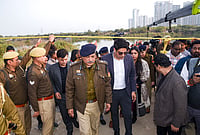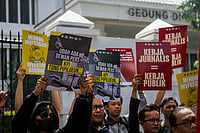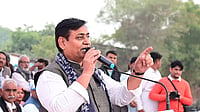As part of the two-day visit to Jharkhand, Prime Minister Narendra Modi is visiting the Bhagwan Birsa Munda Memorial Park-cum-Freedom Fighter Museum in Ranchi and his birthplace at Ulihatu village on Wednesday. The Union government marks Munda's birth anniversary as 'Janjatiya Gaurav Diwas'.
Birsa's birth anniversary of November 15 is marked as the Statehood Day in Jharkhand. He belonged to the Munda tribe and is known for his role in the Independence movement and efforts to reform the tribal community of the state and free it of systemic feudal and colonial oppression.
While the Union government and the Bharatiya Janata Party (BJP) term the promotion of Birsa's legacy as rightful recognition, Jharkhand's ruling coalition comprising Jharkhand Mukti Morcha (JMM), Congress, and Rashtriya Janata Dal (RJD) have accused them of "hijacking" the legacy. Critics have also accused the BJP of appropriating other historic figures for present-day political purposes.
Political observers also see the discourse around the tribal leaders like Birsa Munda in Jharkhand or Rani Kamalapati In Madhya Pradesh as a medium to woo the tribal voters ahead of the national elections. In Jharkhand, Modi is set to launch 'Viksit Bharat Sankalp Yatra' and Pradhan Mantri Particularly Vulnerable Tribal Groups Mission (PMPVTGM) on Wednesday. While the yatra is primarily an awareness and enrolment drive about the various government initiatives, the PMPVTGM is a scheme with an outlay of Rs 24,000 crore for the social and health improvement of remote and marginalised tribal groups.
In this context, we here list five tribal leaders who have been politically appropriated in recent years and have made headlines.
1. Jharkhand's Birsa Munda
Birsa Munda, referred to as Bhagwan in Jharkhand, is the tallest icon of the state. Jharkhand was granted statehood on his birth anniversary on November 15.
Birsa was from the Munda tribe of the state and was a freedom fighter, religious leader, and folk hero. He led the resistance movements of tribals —adivasis, in their terms— against the colonial and feudal forces in the Chhota Nagpur region.
"With the coming of British administration, the existing system of feudal-landlordism, which was generative of apathy for the ‘original settlers’ in the area, was further entrenched by the legal-political edifice established by the empire. These laws brought about massive changes to the existing system of land governance...It was against this background of systemic violence witnessed by the Munda adivasi that Birsa Munda mobilised the tribal community and rose against the British, missionaries and the zamindars (landlords). He rallied people by employing a method of religiosity – where he declared himself as the prophet commissioned by the gods to retrieve the lost ‘Munda Raj’," writes Rahul Ranjan at Talking Humanities blog of School of Advanced Studies of University of London.
Since Birsa is so deeply associated with the tribal movement for justice against the historic persecution, which predates the British advent in the region, political parties today are staking claim to his legacy. While Jharkhand Mukti Morcha (JMM) stakes the first claim by invoking its nativist card, the Bharatiya Janata Party (BJP) has also been seeking a claim. Thus, the push for government policies on tribals and the focus of the Sangh Parivar on the tribals.
Barely four months ahead of the national elections, Modi is set to launch Rs 24,000 crore-worth Pradhan Mantri Particularly Vulnerable Tribal Groups Mission (PMPVTGM) that would address 75 tribes in 18 states and Union Territories (UTs). The Prime Minister's Office (PMO) says: "These tribes stay in scattered, remote, and inaccessible habitations, often in forest areas and hence a mission with budget of about Rs 24,000 crore, is planned to saturate PVTG families and habitations with basic facilities such as road and telecom connectivity, electricity, safe housing, clean drinking water and sanitation, improved access to education, health and nutrition and sustainable livelihood opportunities."
The BJP has also been accused of selectively appropriating Birsa's legacy by focussing on his movement against Christian missionaries, who were widely seen as a front for the colonists during the British Raj and often faced the ire in anti-colonial movements. The tribals comprise at least around 25 per cent of Jharkhand's population and the BJP has made inroads into the community over the past decade. Hence the tussle over the legacy.
"Soren also alleged that the Rashtriya Janjatiya Gaurav Divas declaration was just a 'political formula'. Political observers, however, see the ongoing game of one-upmanship as being about the BJP’s bid to reclaim the tribal support while the ruling JMM is doing everything to forestall it," notes India Today's Amitabh Srivastava.
Noting that the BJP has traditionally done well amongst Munda voters while JMM has done well amongst the Santhals, Srivastava wrote, "The 2019 assembly polls, however, saw even the Mundas deserting the BJP. Now, by invoking Birsa Munda, the BJP is clearly aiming to win back the tribal community. But they do have a roadblock called Hemant Soren in their path."
2. Rani Kamalapati In Madhya Pradesh
In 2021, the Bharatiya Janata Party (BJP) government in Madhya Pradesh renamed the Habibganj Railway Station in Bhopal after the Gond Queen Kamalapati.
MP Chief Minister Shivraj Singh Chouhan hailed Kamalapati as the pride of the Gond tribe and "the last Hindu queen of Bhopal". Madhya Pradesh notably has the country's largest tribal population by numbers. Within the state, tribals comprise around 21 per cent of the population, which amounts to around 1.53 crore. Of them, Gonds comprise around 43.57 lakh, according to a report in The Daily Pioneer.
"Rani Kamalapati is the pride of the Gond community and the last Hindu queen of Bhopal. Her kingdom was usurped by Afghan commander Dost Mohammed by deceit through a conspiracy. When she saw that victory was not possible, she committed ‘Jal Jauhar’ (ritual suicide) to save her honour," said Chauhan in 2021.
Bhopal-based political analyst Girija Shankar acknowledged that Kamalapati has been a marginalised historical figure, but also said that the renaming of the station was part of the BJP's attempt to woo the tribals politically.
Shankar told The Print, "The Gond tribe has a significant population in Madhya Pradesh. The BJP has been focusing on tribal communities for quite some time. This kind of symbolism is very important in politics to get a hold on people’s sentiments. The BJP has found a good tribal symbol in Rani Kamlapati, who herself has been on the margins in history. This seems like an effort to increase the BJP’s influence in the Gond tribe."
3. Sidhu and Kanhu Murmu
Sidhu and Kanhu Murmu were the leaders of the Santhal Rebellion during 1855-56 in the present-day Jharkhand and West Bengal. They were brothers.
Comparable to Birsa Munda, the two have been termed as 'rebellious prophets' as they also based their movement on visions from their tribal spirit 'Thakur Bonga'. Based on the divine orders, they organised several thousands of Santhals and rebelled against the British. However, just like Birsa, the movement was not limited to being anti-colonial but also covered the feudal landlords and feudal officials who they saw as their oppressors.
Thus the Murmu brothers are seen not just anti-colonial leaders but also as leaders of the tribals against historic systemic abuse from feudal and later imperial forces.
As BJP invokes Birsa in Jharkhand, there has been some anxiety among the non-BJP leaders that Sidhu and Kanhu's legacy could also be hotly contested soon.
4. Tantia Bhil
Tantia Bhil was a tribal revolutionary from the 19th century. He was active in the 19th century in central India in what's today's Madhya Pradesh. The Bhils are the largest tribal group of Madhya Pradesh. The state notably has the largest population of tribals in the country.
Tantia is among the historic tribal figures who have been appropriated by both the Congress and the Bharatiya Janata Party (BJP). The Shivraj Singh Chouhan government in MP has renamed Indore's Patalpani railway station after him.
Tantia is also known as the Robin Hood of India as he used to loot the British and distribute the stolen wealth among the needy.
"He became a symbol of the feelings of tribals and general people. He used to plunder the government treasuries of the British government and wealth of their sycophants used to distribute it among the poor and needy. He was skillful in Guerilla warfare. He was ultimately arrested and taken to Jabalpur jail where the British officers tortured him inhumanly," says a government website about Tantia, adding he was hanged till death in 1889.
5. Komaran Bheem
Komaran Bheem was a Gond revolutionary leader who led movements against both the British and Nizams of Hyderabad. He is credited with the 'Jal, Jangal, Jameen' slogan that has over the decades come to represent the rights movement of the tribals across the nation.
Bheem was also portrayed in the Oscar-winning film 'RRR' and received threats over a scene in which he was seen dressing like a Muslim man. The portrayal has also been criticised for being too liberal. The film, however, never intended to be a bio-pic but was more of a period drama featuring a dramatised historic figure.
In 2021, Bheem was also the focus of the BJP's Telangana Liberation Day public meeting in the state. Ironically, even as the party celebrated Bheem, some quarters in the party threatened SS Rajamouli over the 'Muslim scene' and one even threatened arson.
After the film came out, the Hindu Right also portrayed Bheem as a Hindu nationalist leader in the wake of the film's overtones.
Sruthi Vibhavari in Siasat writes that Bheem was more of a revolutionary than a freedom fighter and was an expert in guerilla warfare.
"Among Telangana’s several personalities, Gond tribal leader Komaram Bheem is more of a revolutionary than a freedom fighter, who took up arms against the ruling classes of Telangana, which functioned under Mir Osman Ali Khan, the last Nizam of the erstwhile Hyderabad state (of which Telangana was part of)....Bheem is also considered to be a guerilla warfare expert. He was killed while fighting the police of the erstwhile Hyderabad state in 1940, and every year Gonds observe his martyrdom at Jodeghat," writes Vibhavari.
The appropriation is not just limited to politics as Bheem was also portrayed in Hindu religious imagery in 'RRR'. Telugu film critic and journalist Bharadwaja Rangavajhala told The Wire, "Rajamouli’s RRR was an outright Hindutva film. The freedom fighters Alluri Sitarama Raju and Komaram Bheem were turned into Hindu gods Rama and Hanuman so that the film would work well across India. Rajamouli realised that there was a market for such films and encashed it."







